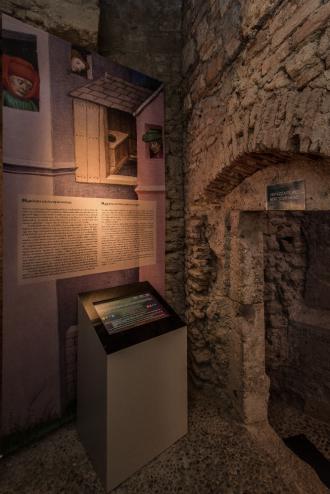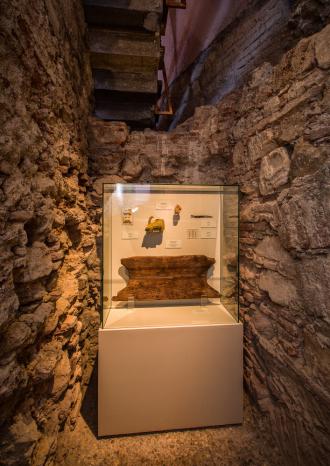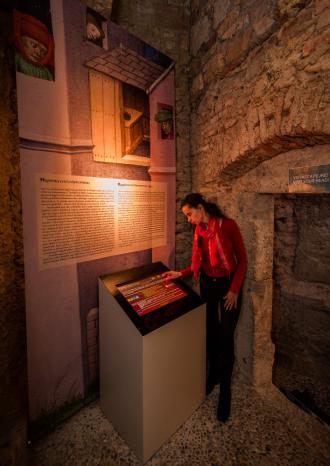How to do it step by step
1st Step:
Choose object and topic
We would have liked visitors to “bump into” at least one of the five installations on one of the floors of the museum (the museum has four floors in total).
The new entrance to the museum from the so-called King’s Cellar leads tourists and visitors from the reconstructed medieval garden into the museum. By using the popular topic of a former lavatory (a topic still relevant today, since many visitors look for the toilet soon after entering the museum) we tried to arouse the interest of visitors from the start, in the case of those entering the museum from this direction.
The reconstructed medieval lavatory provides an outstanding location for visitors to think about the habits of the people living in the former Royal Palace.
2nd Step:
Check technical requirements
The medieval part of the palace was reconstructed in the 1960s and, given that there had been no further significant refurbishment work carried out since then, we needed to ensure that all modern technical requirements for the use of a touchscreen within the installation were met.
3rd Step:
Estimating costs
The estimate for equipment proved accurate, but programming needed to be better planned in order to produce a detailed estimate of the costs involved.
4th Step:
Create content
To define the content, we consulted with the curators of the exhibitions, and the refurbishment of that part of the museum was a happy coincidence. We bore in mind the existing exhibition objects in this part of the museum and also consulted historians on the history of hygiene.
5th Step:
Final corrections
The content had to fit the behaviour of the visitors as well. Since we planned to lead them through the history up until the present day, we needed to consider how long they would spend browsing on the touchscreen.
6th Step:
Installing the installation
The installation design matches the museum’s existing boxes and touchscreen systems. The installation was carried out in parallel to the refurbishment of that section of the museum.






















